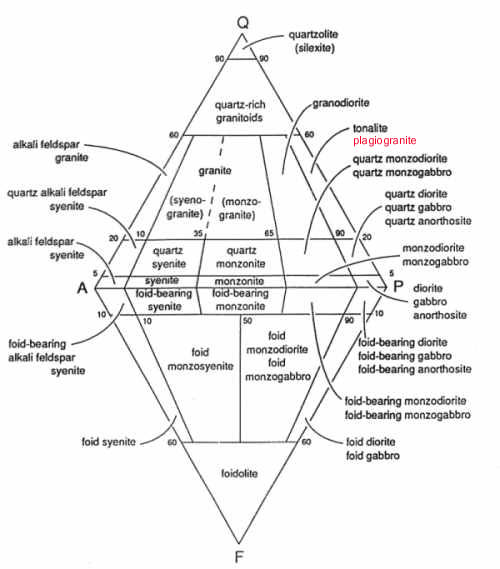Classification of the Magmatic Rocks
See how to represent a rock in a triangular diagram?
The Streckeisen's Double-Triangle Classification is used to classify all magmatic rocks, excluding ultrabasic rocks. However, it is best suitable for acidic and intermediate magmatic rocks, i.e. the more leucocratic ("light-colored") rocks.
Actually, it is based on the proportion of the three leucocratic essential mineral families in these rocks. These are the feldspars: A, the alkali feldspar (Na: albite and K: orthoclase) and P, the calc-sodium feldspar (plagioclase); Q, quartz for rocks over-saturated with silica, or F, le feldspathoid (abbreviated "foid" in the triangle below) for the silica-undersaturated rocks.
Ferromagnesian minerals are usually present in minor proportions (a few tens of %). The proportion of the latter, usually coloured minerals, is used to define the Colour Index (CI).In theory, it is advisable not to use this classification when CI>90%.In practice, as I noted above, this classification is best suited to leucocratic rocks, with a CI >50-60%. To give an example, the "anorthosite, diorite, gabbro" box contains rocks with a highly variable color index. A more appropriate classification for gabbro (- anorthosite) has also been proposed.
In the "tonalite" box, I have added plagiogranite, a term used for the rare granites of the oceanic lithosphere. This term is synonymous with trondhjemite and leucotonalite.

Streckeisen classification and nomenclature of plutonic magmatic rocks based on their modal mineralogical assemblage.
(Recommendations of the International Union of Geological Sciences)
